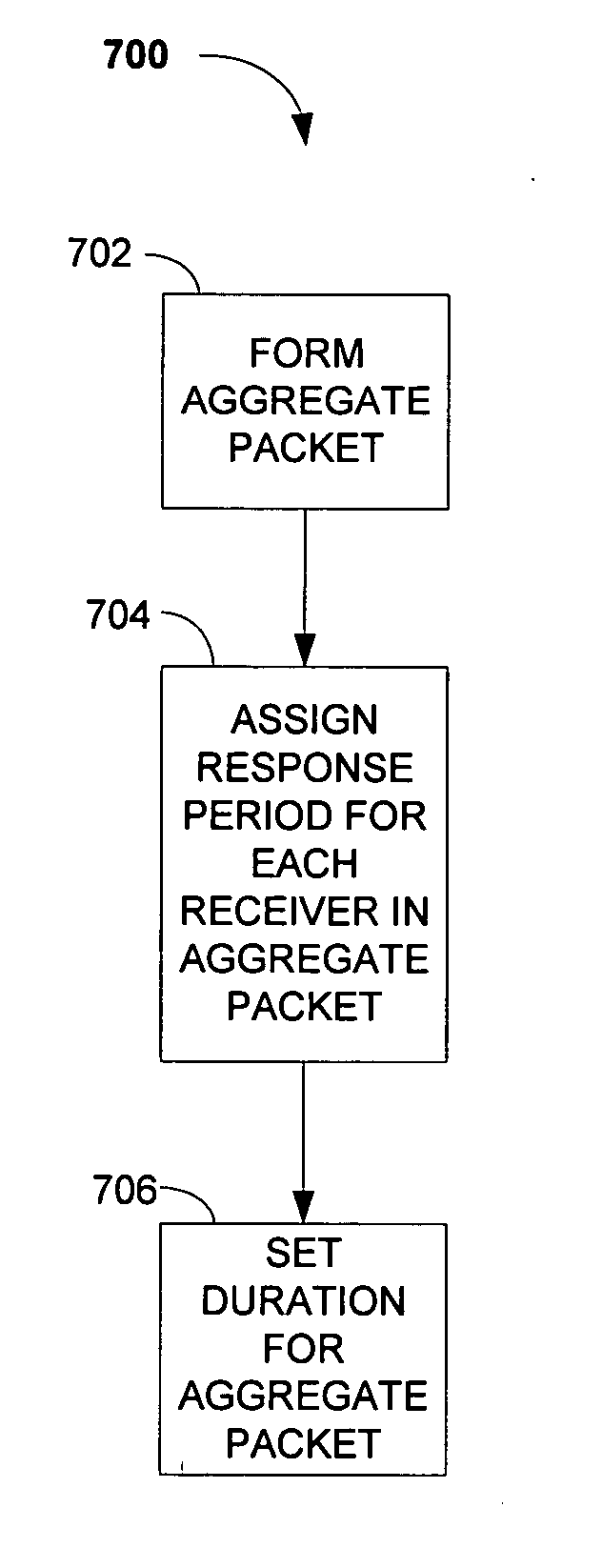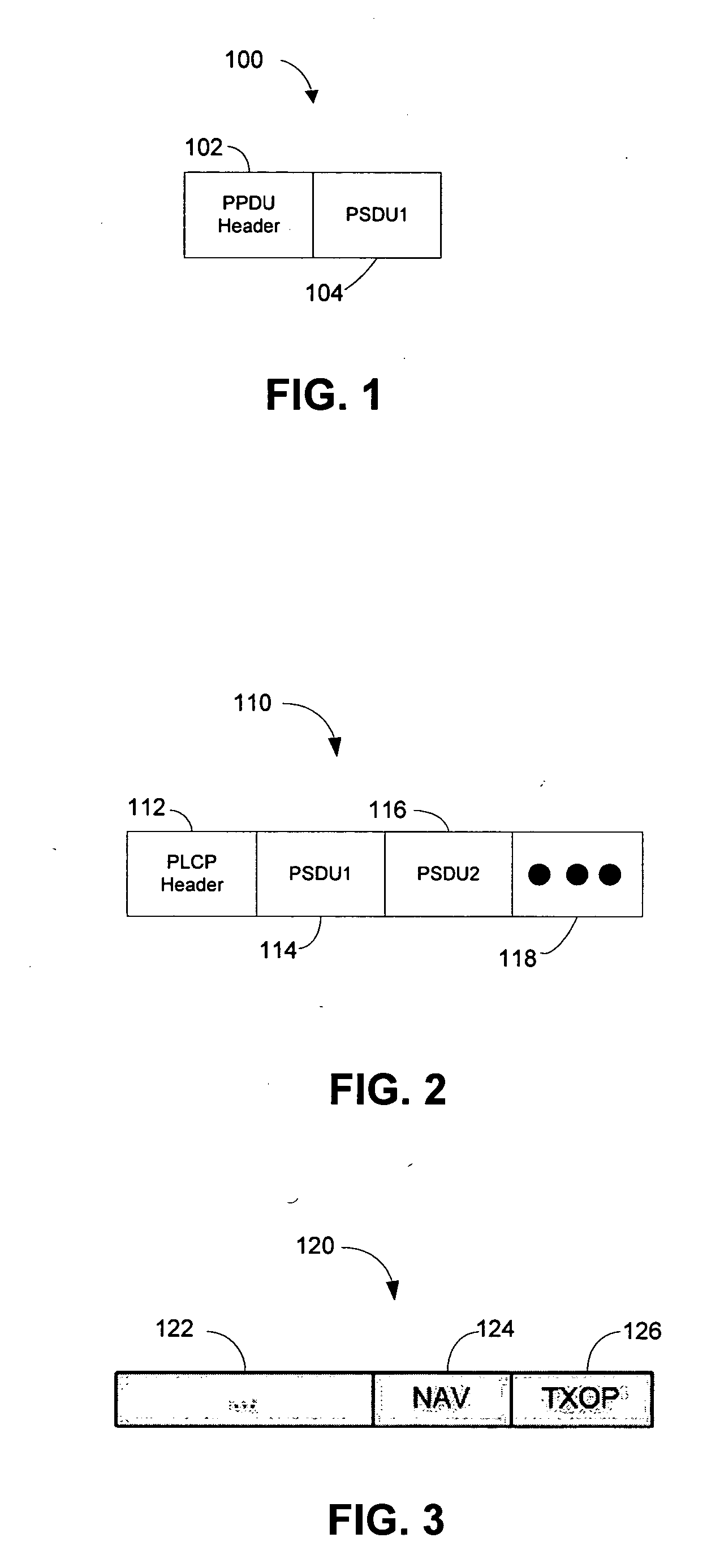Multiple receiver aggregation
a technology of multiple receivers and aggregation, applied in the field of wireless communication, can solve the problems of affecting the reliability and feasibility of multiple receivers, affecting the distribution and affecting the reliability of multiple acks or bas after the sifs,
- Summary
- Abstract
- Description
- Claims
- Application Information
AI Technical Summary
Benefits of technology
Problems solved by technology
Method used
Image
Examples
Embodiment Construction
[0022] Throughout this description, the preferred embodiment and examples shown should be considered as exemplars, rather than limitations, of the present invention.
[0023] The present invention is a multiple receiver aggregation (MRA) technique that allows for multiple immediate responses of acknowledgements (ACKs) or block acknowledgements (BAs). The present invention uses a spoofed NAV implemented within the aggregate's PLCP header to protect the aggregate and all of the immediate responses from the multiple receivers. The immediate responses from the multiple receivers are scheduled. The scheduling information is included in the PSDU headers contained within the aggregate.
[0024] By using various aspects of the present invention, a transmitter (e.g., high throughput “HT” transmitter) can send aggregates to multiple receivers (e.g., HT receivers) and request immediate ACKs / BAs from all or some of the addressed receivers. The receiver can attach an aggregate MPDU to the transmitte...
PUM
 Login to View More
Login to View More Abstract
Description
Claims
Application Information
 Login to View More
Login to View More - R&D
- Intellectual Property
- Life Sciences
- Materials
- Tech Scout
- Unparalleled Data Quality
- Higher Quality Content
- 60% Fewer Hallucinations
Browse by: Latest US Patents, China's latest patents, Technical Efficacy Thesaurus, Application Domain, Technology Topic, Popular Technical Reports.
© 2025 PatSnap. All rights reserved.Legal|Privacy policy|Modern Slavery Act Transparency Statement|Sitemap|About US| Contact US: help@patsnap.com



